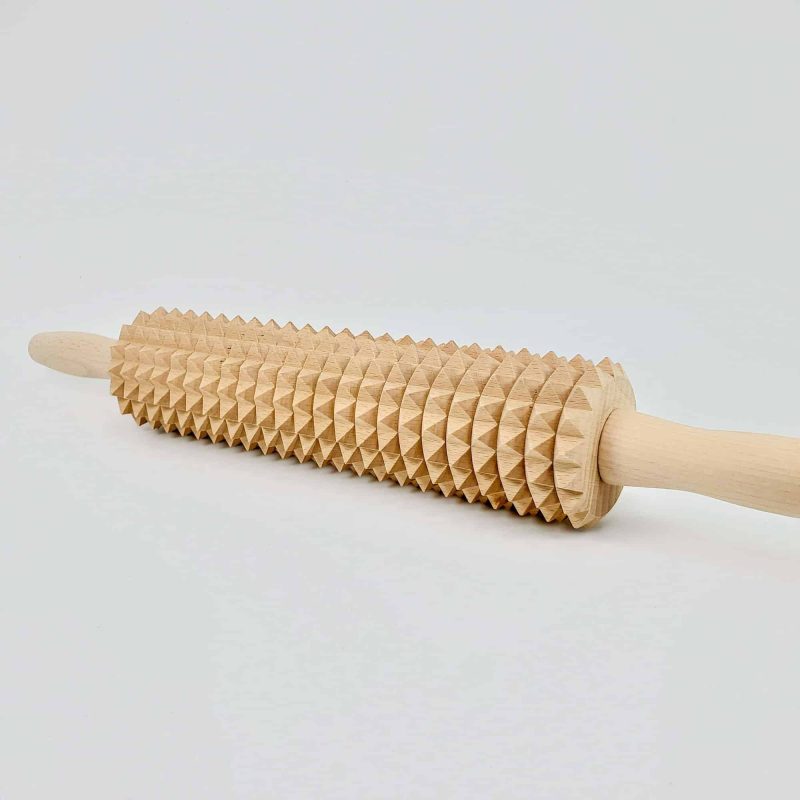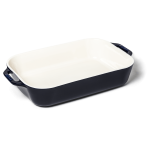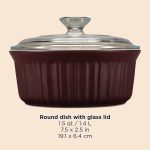Introduction
Rolling pins are fundamental tools in any baker’s or cook’s arsenal, playing a crucial role in flattening dough for pastries, pizzas, pasta, and various other culinary delights. Over time, various designs have emerged to cater to different preferences and baking needs. Understanding the types of rolling pins and their specific uses can elevate your culinary creations. Let’s explore some of the most common styles and their applications in baking and cooking.
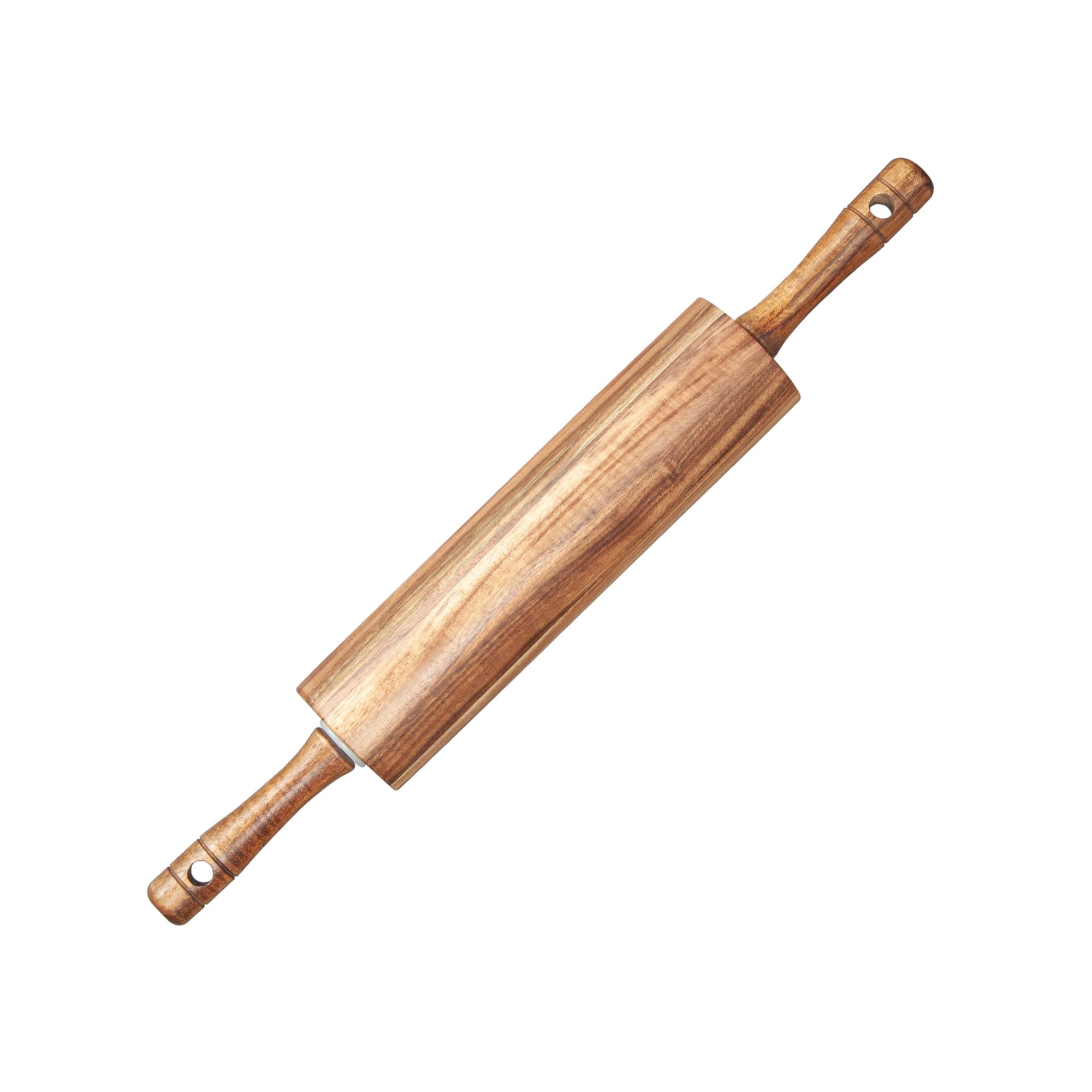
Traditional Rolling Pin
The classic rolling pin typically features two handles connected by a cylindrical barrel. It’s often made of wood but can also be found in materials like marble or silicone. This versatile design is suitable for a wide range of tasks, from rolling out pie crusts to flattening cookie dough. Its simplicity makes it a staple in many kitchens, and the weight can vary depending on the material, influencing how much pressure is needed during use.
French Rolling Pin (Tapered Pin)
Unlike the traditional rolling pin, the French rolling pin lacks handles and tapers towards the ends. Usually crafted from wood, it’s lighter and more maneuverable, providing greater control and sensitivity when working with delicate doughs like puff pastry or filo. Its design encourages the use of the palms rather than just the wrists, leading to a more even distribution of pressure and thinner, more consistent results.
Rod or Bakery Rolling Pin
Rod rolling pins, also known as bakery-style pins, are long, straight, handle-less pins made of heavy materials like wood or stainless steel. They’re designed for professional use, where large batches of dough are common. The substantial weight of these pins does much of the work, making them ideal for rolling out thick bread doughs or pizza bases with less effort.
Adjustable Rolling Pin
An innovative design, the adjustable rolling pin features removable rings or adjustable discs that can be set to specific thicknesses. This feature is particularly useful for achieving uniform thickness in pastry or cookie dough, ensuring even baking. It’s a great tool for beginners or anyone looking for precision in their baking projects.
Non-Stick or Silicone Rolling Pin
These rolling pins, usually made from silicone or coated with a non-stick surface, are perfect for sticky doughs like fondant or gum paste. They reduce the need for excessive flour dusting, preventing the dough from drying out. Additionally, they’re easy to clean and lightweight, making them a practical choice for those who value convenience.
Embossed Rolling Pin
An embossed rolling pin has patterns or designs carved into its surface, which transfer onto the dough when rolled. It’s a fun and creative way to add decorative touches to cookies, pie crusts, or fondant decorations. These pins are often made of wood or plastic and can be a charming addition to your baking tools, especially for holiday or themed baking.
Choosing the Right Rolling Pin
Selecting the right rolling pin depends on personal preference, the type of dough you’re working with, and the desired outcome. For example, if precision is key, an adjustable rolling pin might be best. If you’re working with delicate pastries, a French rolling pin could provide the control you need. Marble pins are great for keeping dough cool, while silicone pins are ideal for sticky substances.
Ultimately, experimenting with different styles can help you determine which rolling pin feels most comfortable and effective for your baking and cooking needs. As with any kitchen tool, the right rolling pin can significantly enhance your culinary experience, turning mundane tasks into enjoyable and productive moments in the kitchen.
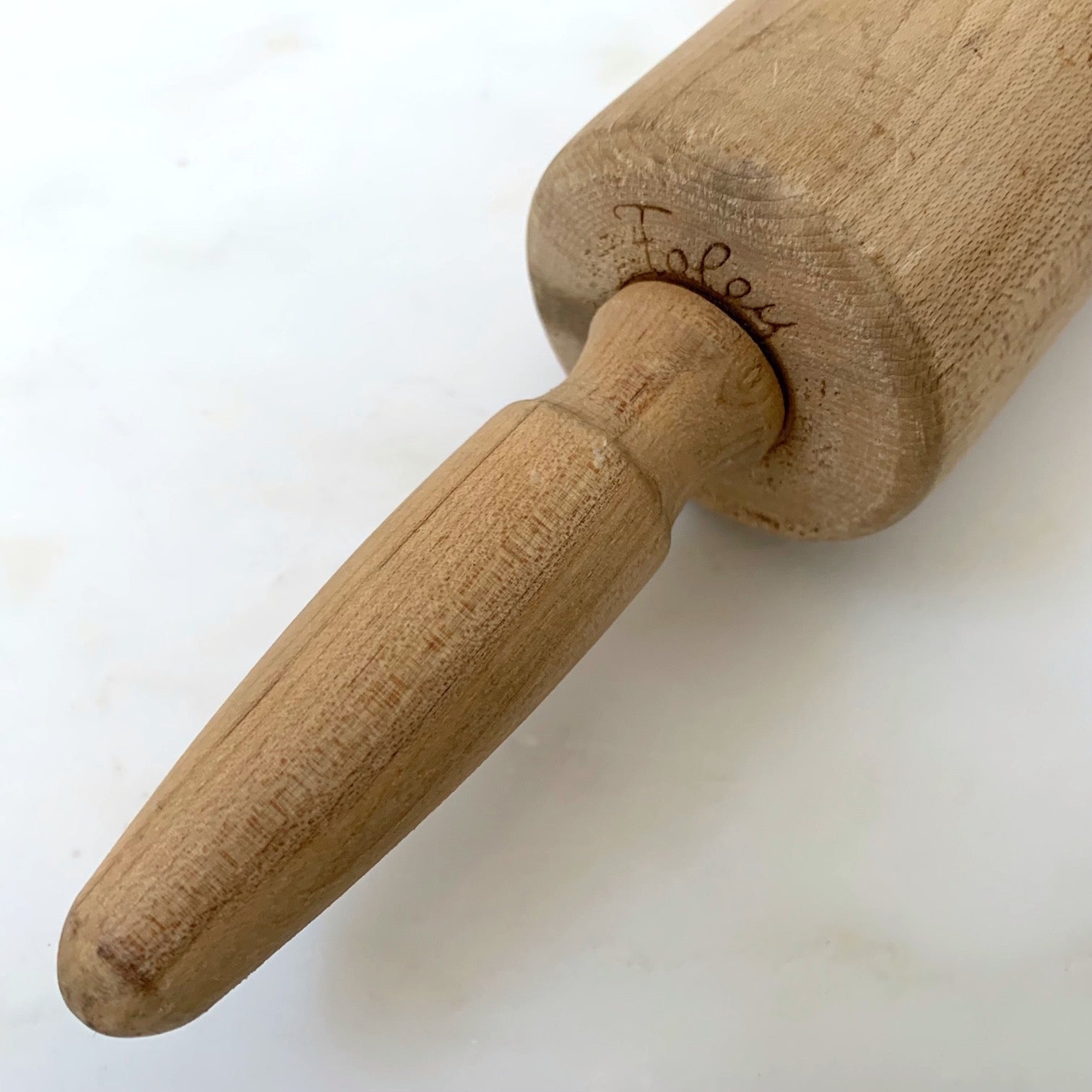
Traditional Wooden Rolling Pin:
- Material: Usually made of hardwood such as maple, beech, or birch.
- Shape: Straight cylinder with handles on both ends.
- Uses: Ideal for rolling out dough for cookies, pies, and bread. The weight and smoothness of wood help flatten dough evenly. It’s versatile for both home and professional baking.
French Rolling Pin:
- Material: Often made from hardwood like maple or beech.
- Shape: Tapered cylinder without handles, resembling a rod.
- Uses: Allows for more control and finesse when rolling dough, especially pastry and pie crusts. The lack of handles provides a tactile feel for dough thickness and promotes a gentle touch.
Marble Rolling Pin:
- Material: Made of heavy marble or stone, sometimes with wooden handles.
- Shape: Similar to traditional rolling pins with cylindrical shape and handles.
- Uses: Marble’s cool surface helps keep dough cool, preventing butter from melting too quickly. Ideal for rolling out pastry and fondant, where temperature control is crucial.
Silicone Rolling Pin:
- Material: Made of silicone with a non-stick surface.
- Shape: Can vary from straight to tapered cylinders, with or without handles.
- Uses: Non-stick surface makes it perfect for rolling out sticky doughs like cookie or biscuit dough. Easy to clean and dishwasher-safe, suitable for home baking.
Textured Rolling Pins:
- Material: Usually made of plastic or silicone.
- Shape: Cylindrical with various textures or patterns on the surface.
- Uses: Used to imprint designs or textures onto dough or fondant, such as for cookies or decorative pie crusts. Adds visual interest and texture to baked goods.
Adjustable Rolling Pin:
- Material: Often made of wood or plastic, with removable discs.
- Shape: Straight cylinder with handles, includes discs to adjust dough thickness.
- Uses: Ensures dough is rolled out to a consistent thickness by using removable discs of varying heights. Useful for pastry, cookies, and pizza dough.
Pinless Rolling Mat:
- Material: Typically made of silicone or flexible plastic.
- Shape: Flat mat with printed measurements and guidelines.
- Uses: Allows for rolling out dough directly on the mat, providing easy guidelines for size and thickness. Portable and easy to store, suitable for small kitchens or travel.
Spring-loaded Rolling Pin:
- Material: Often made of stainless steel or metal, with handles.
- Shape: Cylindrical with a spring mechanism inside.
- Uses: Designed to flatten dough to an even thickness by applying uniform pressure. Suitable for professionals needing consistent dough thickness.
Uses in Baking and Cooking:
- Rolling Out Dough: All types are primarily used to flatten and shape dough for various baked goods like cookies, pies, tarts, and bread.
- Creating Uniform Thickness: Adjustable and spring-loaded rolling pins are ideal for ensuring dough is rolled to a specific thickness for even baking.
- Decorative Purposes: Textured and patterned rolling pins add decorative elements to pastries, cookies, and pie crusts.
- Temperature Control: Marble rolling pins keep dough cool, while silicone and non-stick options prevent sticking and ease cleanup.
Tips for Using Rolling Pins:
- Flour Surface: Dusting the rolling pin and work surface with flour prevents sticking.
- Gentle Pressure: Apply even pressure when rolling to maintain uniform thickness.
- Rotate Dough: Turn dough occasionally to prevent sticking and ensure even rolling.
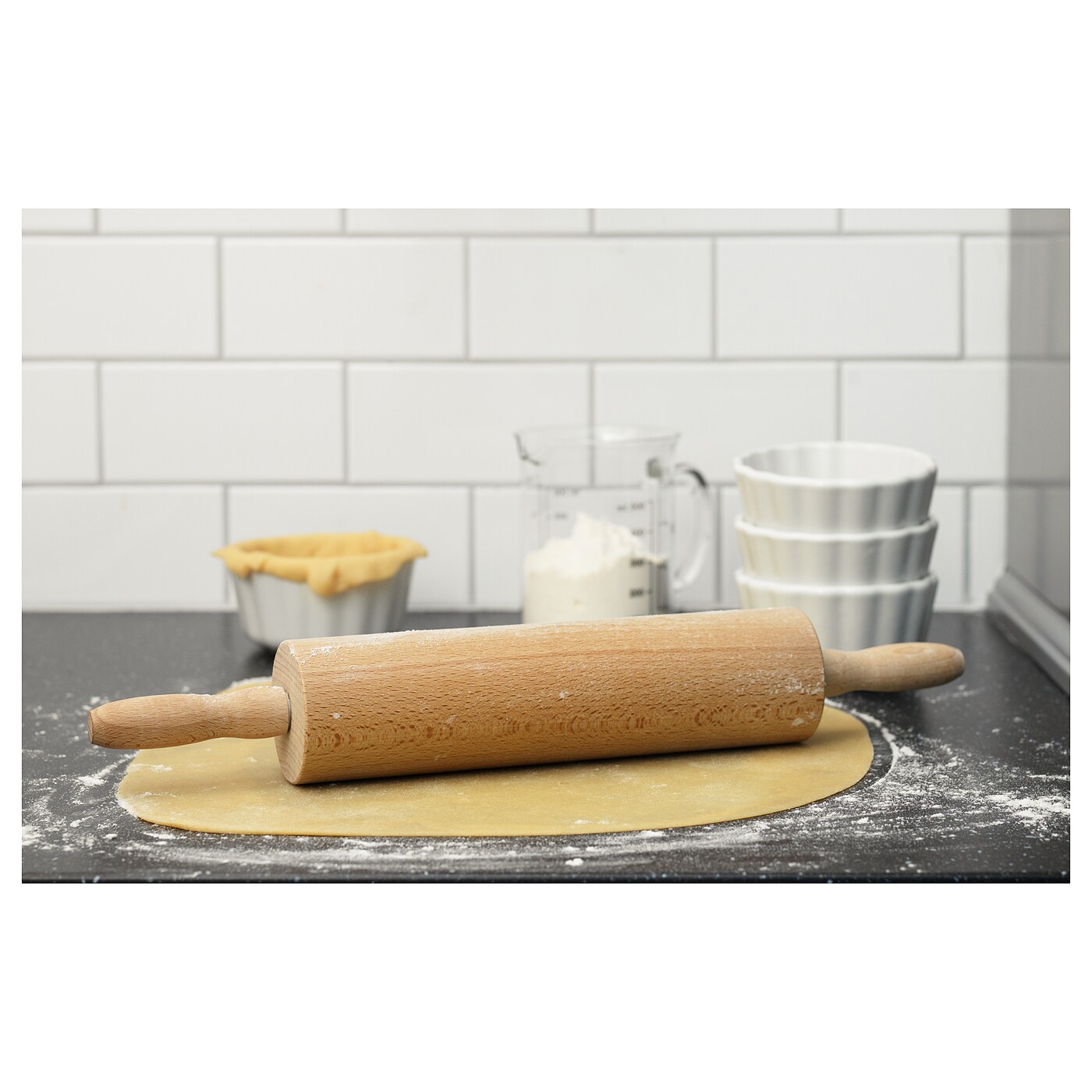
Electric Rolling Pin
For those seeking a more modern and automated solution, electric rolling pins use motorized action to roll and flatten dough evenly. They often come with adjustable settings for thickness and speed, reducing manual labor and ensuring consistency. These are particularly beneficial for individuals with hand or wrist issues or for commercial kitchens where large quantities of dough need to be prepared quickly.
Dough Docker Rolling Pin
While not a conventional rolling pin, a dough docker is a rolling tool specifically designed to prevent air pockets and bubbles from forming in pizza or pastry dough. It has small spikes or wheels that pierce the dough as it’s rolled, ensuring a smooth and even bake. This tool is especially useful for preparing thin-crust pizzas or delicate pastries that require a uniform texture.
Baker’s Palm Rolling Pin
A baker’s palm rolling pin, also known as a palm roller or mini rolling pin, is a small, handheld tool used for detailed work or for rolling out small portions of dough. Perfect for tasks like shaping individual pie crust edges or working on intricate decorations, it fits comfortably in the palm of your hand and offers precise control.
Children’s Rolling Pin
Designed with smaller hands and safety in mind, children’s rolling pins are usually shorter and made from lightweight, non-toxic materials like plastic or silicone. They often feature colorful and playful designs to encourage young bakers to join in the fun. These pins introduce children to the joy of baking while ensuring they can handle the tool safely and comfortably.
Factors to Consider When Choosing a Rolling Pin
- Material: Wood provides a classic feel and can be conditioned over time, whereas marble stays cool and is great for heat-sensitive doughs. Silicone is non-stick and easy to clean, and metal pins are durable and heavy for effortless rolling.
- Handle Design: Comfortable handles can make a significant difference during prolonged use, especially for larger batches or thicker doughs.
- Weight and Balance: The weight of the pin affects how much pressure you need to apply. Heavier pins are good for stiff doughs, while lighter ones offer more control for delicate pastries.
- Ease of Cleaning: Some materials and designs are easier to clean than others. Consider if the pin is dishwasher safe or requires hand washing.
Conclusion
Ultimately, the right rolling pin is one that feels comfortable in your hands, suits the type of baking or cooking you do most often, and enhances your enjoyment of the process. Exploring different options and understanding their specific uses can lead to more satisfying culinary experiences and beautifully crafted baked goods.
